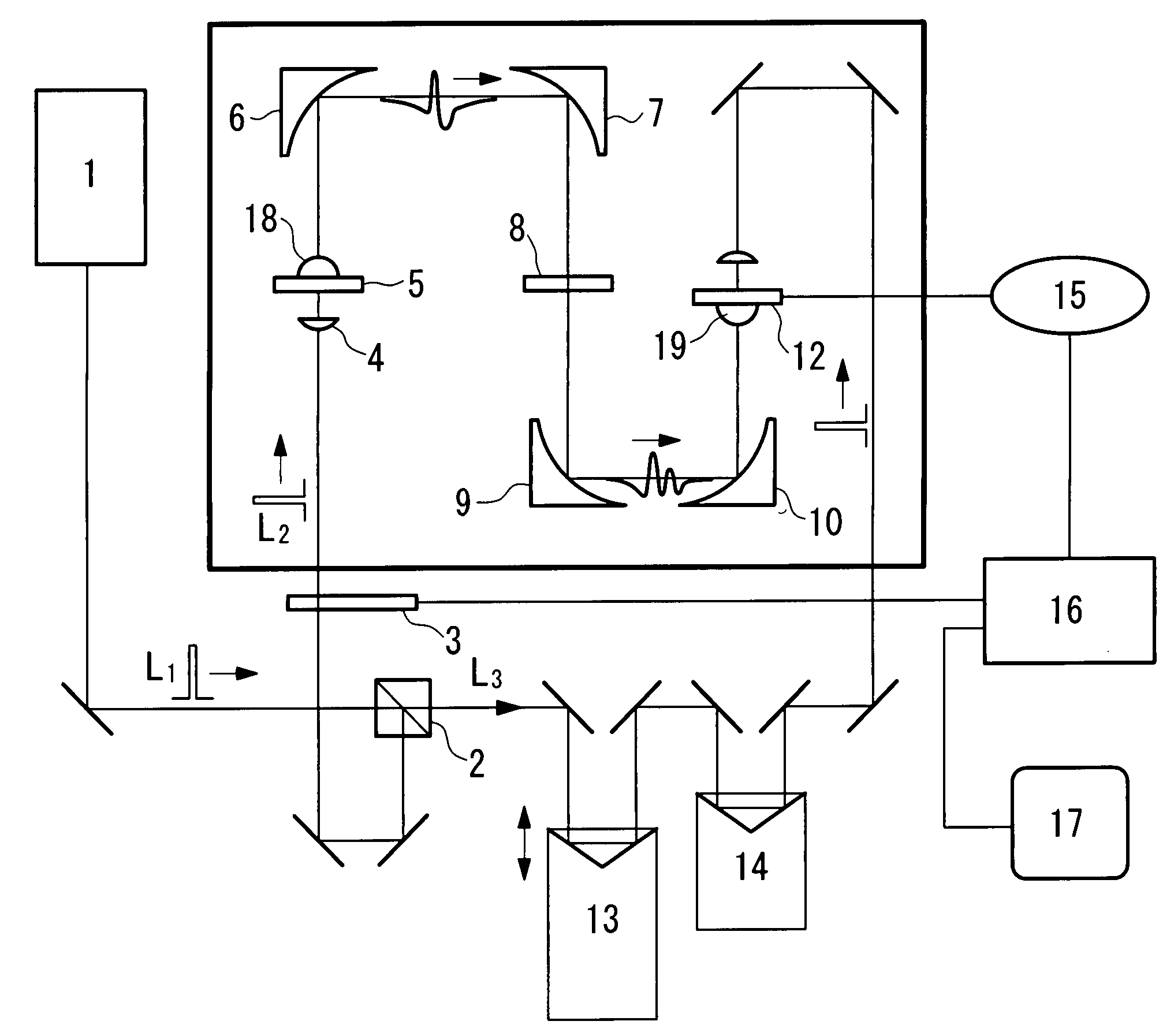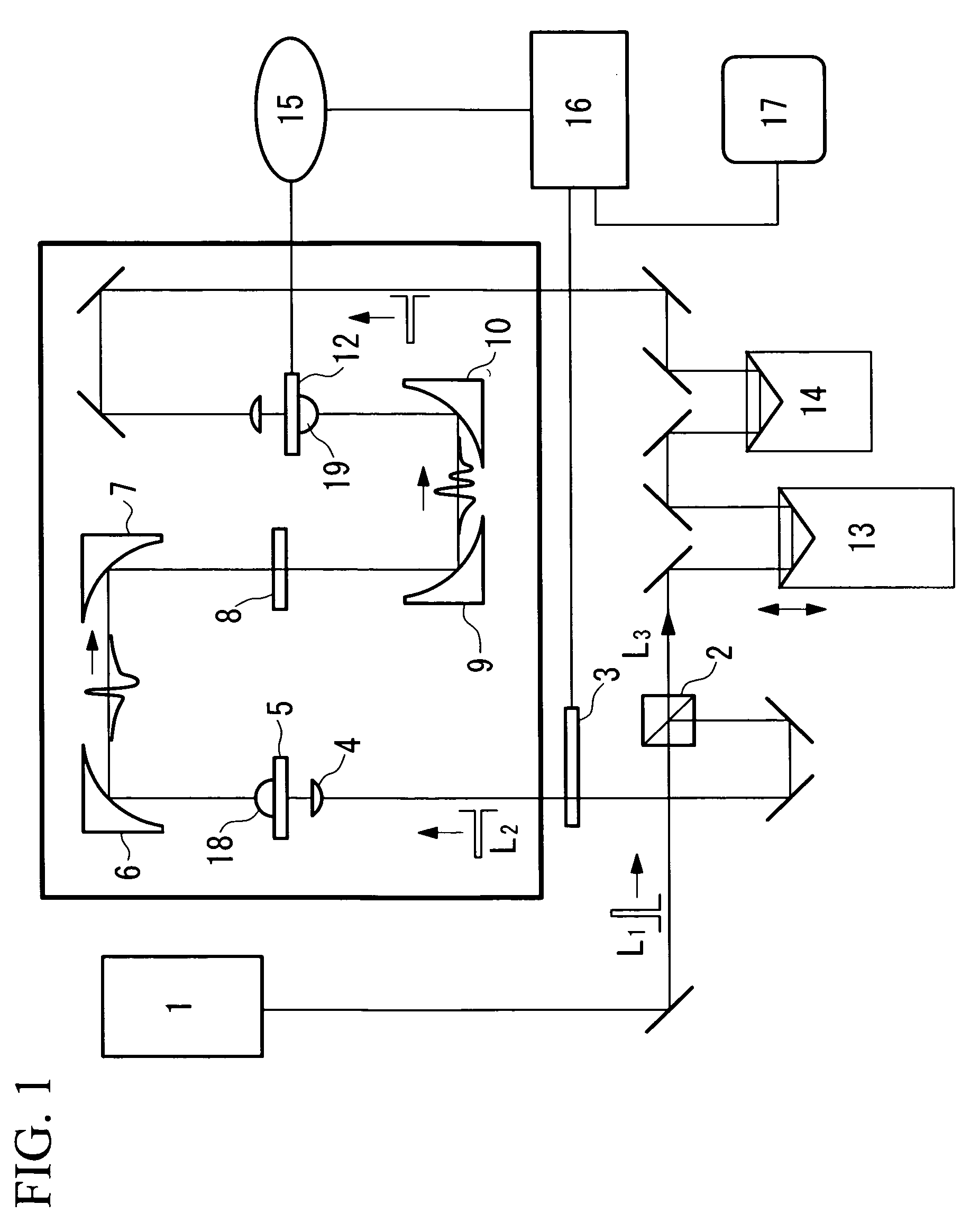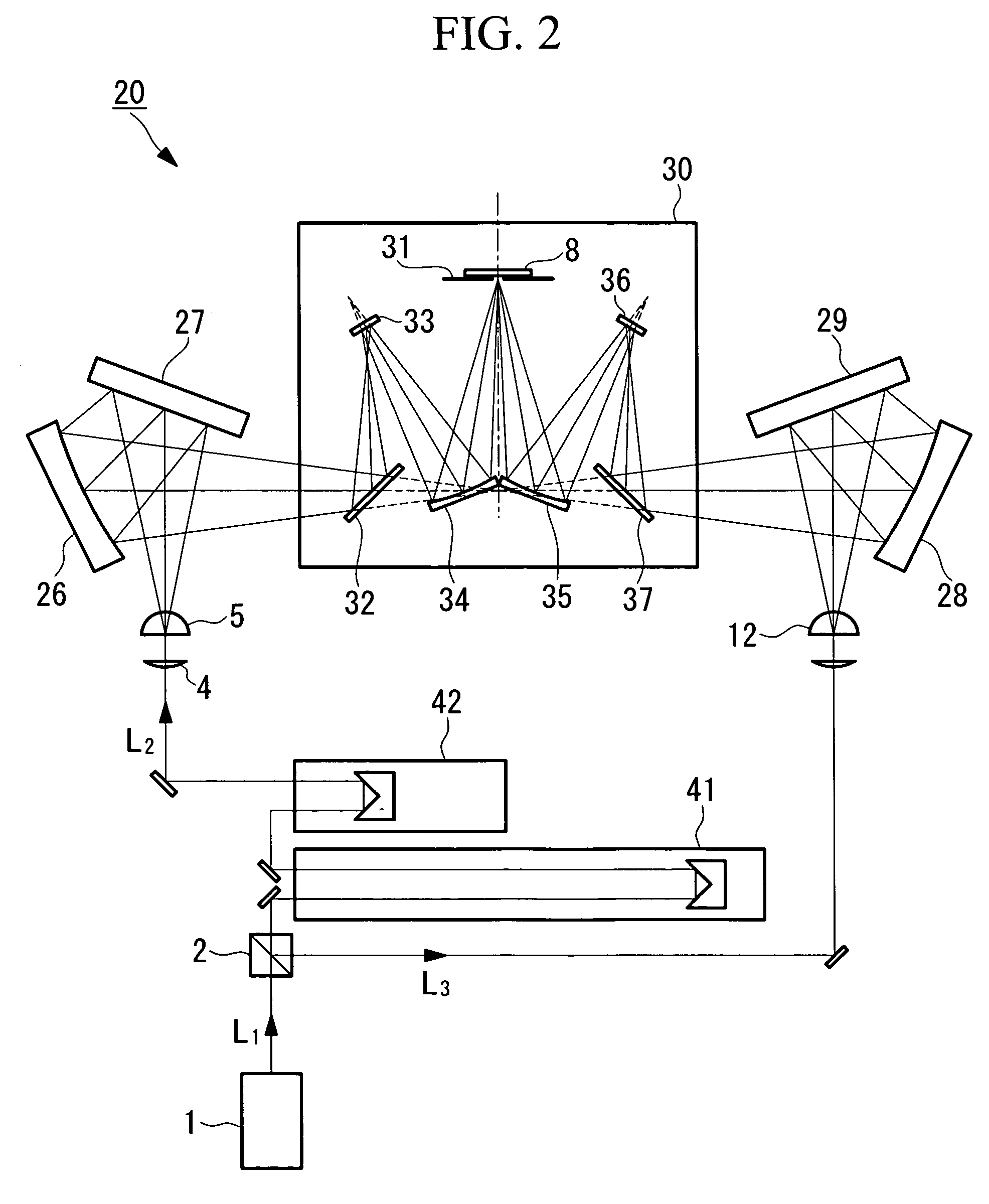Optical path difference compensation mechanism for acquiring wave form signal of time-domain pulsed spectrometer
a technology of optical path difference and wave form signal, which is applied in the direction of optical radiation measurement, fluorescence/phosphorescence, instruments, etc., can solve the problems of requiring a long preparation time and a substantial burden on the operator, and achieve the effect of increasing the optical path length of the pulsed-light emitting unit and the aspherical mirror, increasing the spatial resolution of the sample to be measured, and increasing the optical path length
- Summary
- Abstract
- Description
- Claims
- Application Information
AI Technical Summary
Benefits of technology
Problems solved by technology
Method used
Image
Examples
Embodiment Construction
[0091]FIG. 2 shows the outline configuration of an embodiment of a time-domain pulsed spectroscopy apparatus and an optical-path-difference compensation device for wave form signal acquisition. The same constituent elements as those in FIG. 1 are assigned the same reference numerals and a description thereof is omitted.
[0092] This time-domain pulsed spectroscopy apparatus 20 includes a pulsed laser light source 1. Pulsed laser light L1 from this pulsed laser light source 1 is guided to a splitting unit 2 that splits it into excitation pulsed laser light L2 and detection pulsed laser light L3.
[0093] The time-domain pulsed spectroscopy apparatus 20 further includes a pulsed-light emitting unit 5 that emits pulsed light including wavelengths in the far-infrared wavelength region upon being irradiated with the excitation pulsed laser L2 and a detector 12 for detecting a wave form signal of the electric field intensity of reflected pulsed light from a sample 8, which is irradiated with...
PUM
| Property | Measurement | Unit |
|---|---|---|
| height | aaaaa | aaaaa |
| depth | aaaaa | aaaaa |
| width | aaaaa | aaaaa |
Abstract
Description
Claims
Application Information
 Login to View More
Login to View More - R&D
- Intellectual Property
- Life Sciences
- Materials
- Tech Scout
- Unparalleled Data Quality
- Higher Quality Content
- 60% Fewer Hallucinations
Browse by: Latest US Patents, China's latest patents, Technical Efficacy Thesaurus, Application Domain, Technology Topic, Popular Technical Reports.
© 2025 PatSnap. All rights reserved.Legal|Privacy policy|Modern Slavery Act Transparency Statement|Sitemap|About US| Contact US: help@patsnap.com



